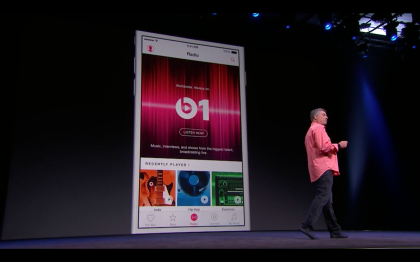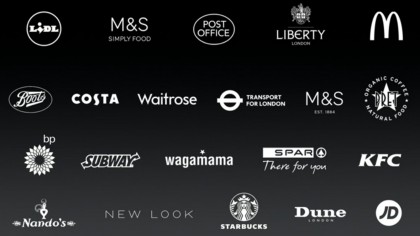The 7 most important things Apple announced at WWDC 2015
Read this and pretend you watched the whole keynote

WWDC 2015 begins with a bang
Apple's Worldwide Developers Conference, or WWDC, has so far been everything we hoped for and then some.
If you didn't sit through the massive 2.5 hour keynote, there's a lot to catch up on. Lucky for you, we're here to give you the Cliff Notes version of Apple's jam-packed presentation.
From iOS 9 to OS X El Capitan to the brand-new Apple Music streaming service, here are the seven most important announcements from WWDC 2015. Click "next" to begin.

Apple's 'one more thing' - Apple Music
iTunes helped revolutionize the sale of digital music. But in recent years, with millions of listeners already tuning in to streaming outlets like Pandora and Spotify, Apple announced today the launch its own streaming service, nudging longtime iTunes users into a new mode of listening. Enter Apple Music.
Launching June 30, Apple Music will let you stream music from your own iTunes library as well as Apple's massive library of tens of millions of songs. The service includes Beats 1, a 24/7 global radio station, hosted by DJs from around the world. Artists can upload their work to Apple Music Connect to help increase their exposure, regardless of whether they're signed to a label or not.
Apple Music playlists are also expected to offer more of the kind of music you like because the service is curated by actual people, not algorithms like on Pandora and Spotify. However, Apple didn't go into much detail in describing whether you can mark those curated playlists for offline listening, like Spotify.
Apple Music costs $9.99 a month, though users will have a free 3-month trial to test it out. A family plan will also be available for $14.99/month for up to six family members. And even if you're not a member, you can still use Apple Music to follow your favorite artists and listen to Beats 1 for free. Android and Windows support is coming in the fall.

Climbing OS X 10 El Capitan
Like the rumors suggested, OS X 10.11, otherwise known as El Capitan, is more about tweaking the OS X experience and improving performance than redesigning the whole interface. The new version of OS X is focused on subtle improvements to the experience and performance optimization with advancements under the hood and smarter ways to do the things you do most.
Some of the tweaks to the new version include handy tricks, like gestures that make it easy to do quick actions, such as deleting a message in Mail, and generating a cursor that will get really big when you first log-on for easy discovery. Other new gestures include a shake that enlarges the mouse cursor and a new way to pin websites on Safari.
El Capitan lets you mute audio in tabs without entering specific pages. Improvements to Spotlight search provide more extensive and integrated search capabilities: you can look up things like sporting event tickets and the weather, all while using natural-language phrases like, "photos from my trip to El Capitan."

Surprise! It's iOS 9
Apple's next-generation mobile operating system, iOS 9, will focus on enhanced system intelligence, numerous improvements to built-in apps and new iPad-specific capabilities. Much like El Capitan, iOS 9 is more about fine tuning and refining than radical change.
There are a number of apps and features of importance to, uh, note. The Notes app has always been great for jotting things down, but with iOS 9 it's been completely redesigned to do much more, gaining more functionality like drawing and access Photos.
A few transformations took place, too. Passbook has become Wallet while Newsstand downsized its name to News, though it did gain a fresh Flipboard-like look, videos to play and content from major publications.
The iPad gains new productivity-minded views with iOS, including a Picture-in-Picture mode, a Slide Over view to see a second app while you're working on something else, and a Split View to run two apps side-by-side at the same time.
Thanks to a smarter Siri (more on this on the next slide) and greater contextual awareness, iOS 9 is poised to be a welcome upgrade for all (and we do mean all since the new OS will work older as well as newer iDevices). It will take less space to install than iOS 8 and should give the iPhone 6 an hour more battery life with average use.
Most radically, Apple is offering iOS 9 as a public beta, the first time it's done so, beginning next month. The general release will happen later this fall.

A smarter Siri
The new and improved Siri arriving in iOS 9 will start living up to the personal assistant's potential. With the OS update, Siri will give users better ways to search for photos and videos. It'll have more contextual awareness, knowing when you get into your car, for example, and will actually understand what "it" means in the context you're using "it." Similar to Google Now, the iOS "proactive assistant" features will use the data on your phone to give advice, provide options and set reminders like never before.
Yet even with its greater intelligence, Siri will still keep your data private, Apple promised.
Thanks to the proactive features, your device can now anticipate what you want to do next based on your location, the time, what app you have open, or what you're connected to, offering apps to open or people to contact based on your usage behavior. Like any great assistant, Siri offers important relevant information based on what you've done in the past. It will do handy things like ping you about appointments and offer traffic conditions when you're heading to a destination.
The new Siri can also learn your listening habits at certain times and places, like the gym, to deliver the right music when you're ready for it.

Apple Pay in the UK
This is a big deal.
Apple Pay launched last year, but it was missing out on a major market. Today, we learned the mobile payment service is finally headed to the UK next month. Eight of the biggest banks and major vendors like M&S, Boots, Costa, McDonald's, Subway and Waitrose will support the payment system. It will land in 250,000 locations in the UK, more than launched in the US.
Apple Pay in the UK will also work with Transport for London services, meaning riders can pay for their trips on the Tube and other modes of public transportation using the feature.
A few other Apple Pay bits include more partner support in the US from the likes of Trader Joe's and J.C. Penney and an Apple Pay-compatible reader from Square launching in the fall. Pinterest's new buy-it pins will also be compatible with Apple Pay on iOS.

Public transit info hitches a ride on Apple Maps
Little changes like adding public transit information to Apple Maps can make a big difference in the long run. In iOS 9, Maps will support bus, ferry, subway and train routes. Apple is actually trying to one-up other transit apps on the market by mapping subway stations to offer a more accurate estimate of travel times. Transit maps will release in select cities to start, including London, New York, San Francisco, Chicago and Beijing.

Mega changes on the way to Apple Watch
It may not be the Apple Watch 2, but the second version of the software behind Apple's first wearable is a cause for celebration on its own.
Among the changes afoot with watchOS 2 is native app support, meaning devs can finally tap into the full potential of the Watch for their apps rather than simply mirroring them from iOS. Other coming features include the ability to respond to emails, watch videos and make FaceTime audio calls straight from the Watch. Having Siri start and stop the Workout app verbally rather than through gesture is another forthcoming improvement. Wallet, the updated Apple Pay and live transit data via Maps are headed to the wearable, too.
Apple Watch faces are going to get way more customizable with the updated OS. Developers will be able to create their own "complications," those little widgets that display information rather than just the time. Users will be able to pick a pic from Photos as their Watch face, or they can choose a Time-Lapse face to see iconic places cycle on display. A new feature called Time Travel lets users see upcoming events and temperatures by turning the Digital Crown.
The new Watch OS will be available this fall.